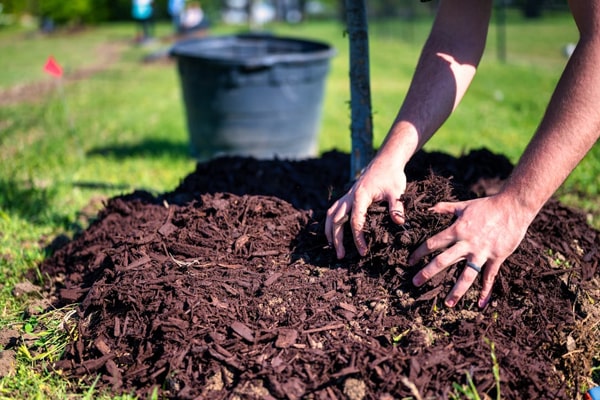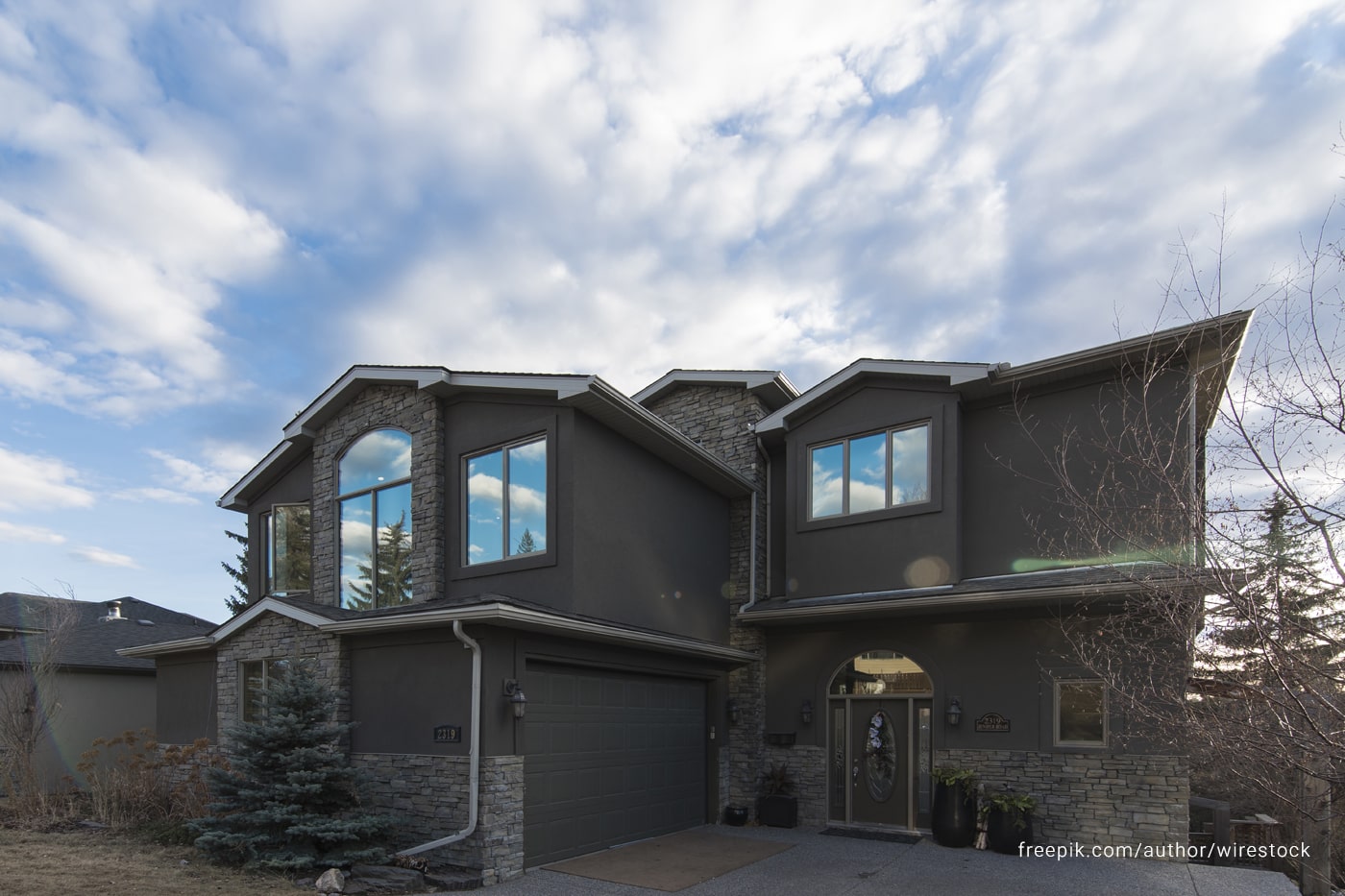Your garden might be sabotaging your best efforts to protect your basement without you realizing it. While you’re focused on making your outdoor spaces beautiful, poor landscaping designs can silently steer water toward your home’s foundation. A few simple adjustments to how and where you landscape can make the difference between a dry basement and costly water damage repairs. The relationship between your yard and your home’s moisture levels is closer than most homeowners think. This guide walks you through the main factors behind basement water issues and practical gardening tips that naturally keep moisture in its place.
Contents []
Causes of a Wet Basement
Fixing basement moisture starts with knowing where the water enters and why the issue happens. The following are the main reasons that lead to wet basements:
1. Inadequate Grading
When the yard around your house doesn’t slope away from it, rainwater flows directly towards your foundation walls. Construction workers often backfill soil without thoroughly compacting it, which can eventually cause the ground to settle. Settling ground creates pools where water collects against your basement walls instead of draining away. Areas under patios and steps are especially vulnerable to this condition, and fixing these grading issues is typically part of foundation repair work.
2. Clogged Window Wells
Window wells are small drainage areas next to your basement walls, but they become water traps if designed poorly. Most wells lack a drainage system, so water accumulates at the bottom and seeps into the surrounding soil. The water then enters the foundation walls or leaks through window frames into your basement. To work properly, these wells need a gravel fill and a drainage system.
3. Sump Pump Issues
Sump pump systems can break down in several ways that leave your basement vulnerable to flooding. Electric pumps can fail during power outages when storms hit, which is exactly when you need them most.
Gardening Tips to Help Prevent a Wet Basement
Poor grading around your foundation can cause extreme basement issues like basement flooding, foundation cracks, and foundation settlement. The following gardening tips will protect your foundation and keep your basement dry all year round.
1. Add Mulch
Mulch is a natural water absorber that soaks up excess water before it reaches your foundation. Place mulch around your flowerbeds, but always maintain at least six inches between your house and the mulch. This prevents moisture from getting trapped against your walls, which would lead to rot and water damage that allows basement leaks.

2. Slope Landscaping Away from the Foundation
Your yard should slope away from your house, dropping roughly six inches every ten feet. This slope will drain rainwater away from your foundation rather than letting it collect around your home. Proper sloping is the single most important landscaping step you can take to prevent water from entering your basement. Without proper grading, water will always flow toward your foundation, no matter what other drainage systems you install.
3. Creating Drainage Around Your Home
Proper drainage systems guide water away from your foundation before problems occur. Keep gutters and downspouts clean and at least four feet away from your house, but farther is even better. Use French drains or catch basins in areas where water tends to collect after rainstorms to route excess water away from your property. Poor drainage often leads to excessive water pressure against foundation walls, necessitating basement waterproofing to prevent flooding and deterioration.

4. Don’t Plant Trees Too Close to the Foundation
Tree roots spread more than most homeowners realize, and actively search for water sources near your foundation. As roots grow and extract moisture from the soil, they create voids that encourage ground movement and settling near your home. Such movement puts pressure on foundation walls and causes cracks that often require costly foundation repairs.
5. Choose Native Plants
Plants that naturally grow in your area handle local weather patterns and soil conditions much better than imported plants. Their established root systems hold soil firmly in place during heavy rains, preventing erosion that can expose your foundation to water infiltration. Also, native plants require less maintenance and watering, making them a cost-effective choice for long-term foundation stability.
6. Water Your Soil
Maintaining consistent moisture levels in the soil around your foundation prevents harmful expansion and contraction cycles. When soil becomes too dry, it shrinks and creates spaces that allow water to rush in during the next rainfall. Regular watering or automated irrigation systems keep soil at steady moisture levels, which reduces excessive volume changes. This works especially well with clay soils that naturally expand and contract significantly with moisture fluctuations.
7. Check Your Downspouts
Downspouts must lead roof water far enough away from your foundation to prevent basement flooding problems. Maintain clean gutters yearly to dispose of collected debris that can cause water to overflow near your home walls. Extend downspouts to direct water at least 20 feet from your foundation toward natural drainage areas. When downspouts discharge water close to your house, the large volume of roof runoff can quickly saturate the soil and create ideal conditions for water infiltration.

8. Add Rain Barrels
Rain barrels collect roof water from downspouts and prevent it from directly flowing to your foundation area. Barrels offer control of where collected water ends up while reducing the volume that can cause basement problems. You can use collected rainwater for garden watering during dry periods, which reduces money on water bills while protecting your foundation.

9. Install a Sump Pump System
Sump pump systems automatically drain excess groundwater from around your foundation before it can flood your basement. These systems continuously monitor water levels and activate pumps when water levels become too high for safety. Installing the right size pump for your basement offers the right protection, and battery backup systems continue the operation during power failure. Professional installation guarantees proper sizing and placement for maximum effectiveness in preventing flooding.
Understanding the different kinds of pumps helps you choose the best system for your specific conditions:
- Pedestal Sump Pumps: These units are positioned above the collection pit to keep motors dry and accessible for maintenance. They cost less initially but create more noise during operation. Since these pumps can be destroyed by water, they must be above the water line at all times
- Submersible Sump Pumps: These pumps operate underwater in the sump pit and run much quieter than pedestal models. The sealed construction typically provides longer service life and better performance.
- Water-Powered Sump Pumps: These backup systems use home water pressure to operate when primary pumps fail during power outages. They work optimally with high, unobstructed water pressure from the main supply lines.
Plant Smart and Keep Your Basement Dry
Every plant choice, every drainage decision, and every gardening move you make is either protecting your foundation or setting it up for disaster. What we’ve discussed aren’t just gardening tips; they’re your insurance policy against flooded basements and foundation fixes that can cost thousands. The homeowners who get ahead of water problems are the ones planting strategically today, not scrambling with buckets tomorrow.



